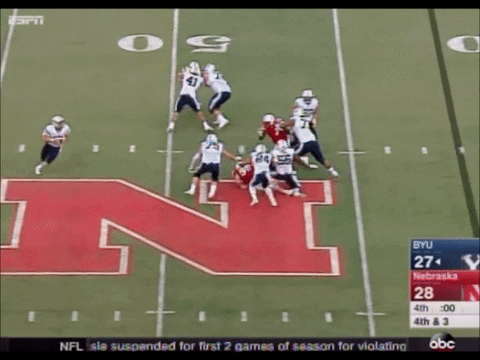

Staubach heaved the ball to Drew Pearson, and the rest is history. During a 1975 playoff game against the favored Minnesota Vikings, the Cowboys were behind with 24 seconds left on the clock. The term �Hail Mary pass� is generally credited to Dallas Cowboys� quarterback Roger Staubach. Linebackers will drop back into coverage against shorter passes, although they are often replaced with additional defensive backs in this situation (giving the defense a nickel package or dime package).

If you ever tried to count how many Hail Marys you have said during your lifetime, the number would probably be quite large. To defend against the Hail Mary, the defense drops into zone coverage and makes sure to keep the receivers in front of them. The meaning of HAIL MARY is a Roman Catholic prayer to the Virgin Mary that consists of salutations and a plea for her intercession. Is the reference to the Hail Mary, for a football play, sacrilegious or an opportunity for evangelization The Hail Mary is the beautiful prayer in honor of the Blessed Virgin Mary. Remember, an NFL game cannot end on a defensive penalty, so the offensive team will get one more play, even if time has already expired. Pass InterferenceĪ Hail Mary can also draw a pass interference penalty, which can give the offense another shot at the end zone with much better field position. The Hail Mary can be run out of the shotgun or singleback formation. Running backs may be kept in to block, or the team may elect to replace the runners with even more receivers. It is common for three or more receivers to line up on the shot side of the field and run a fly pattern. Perhaps the most famous example of the Hail Mary was Doug Flutie�s successful 1984 pass against Miami with six seconds left on the clock.
#Hail mary football play dagram professional
Still, it is a standard play in every professional and college team�s playbook. Hail Mary Passīecause of the distance thrown and the defense being prepared, the Hail Mary pass rarely works. The pass is most commonly used just prior to halftime or the end of the game. Basically, the quarterback throws the ball as far as he can and hopes that a receiver can come down with it. The Hail Mary pass is traditionally a last-ditch forward pass used in both the NFL and NCAA ranks.


 0 kommentar(er)
0 kommentar(er)
